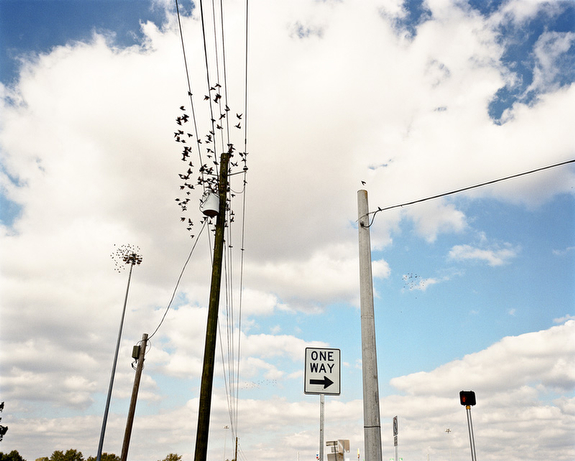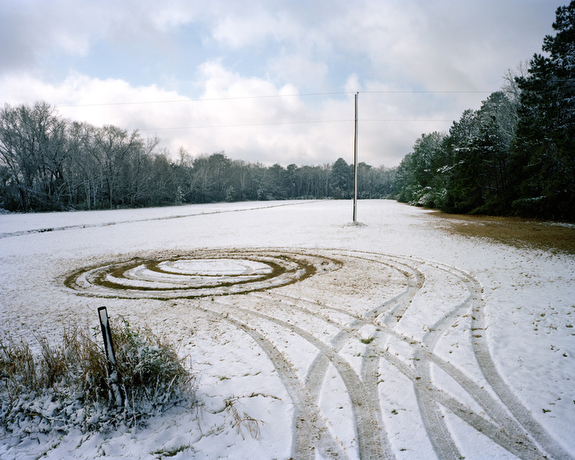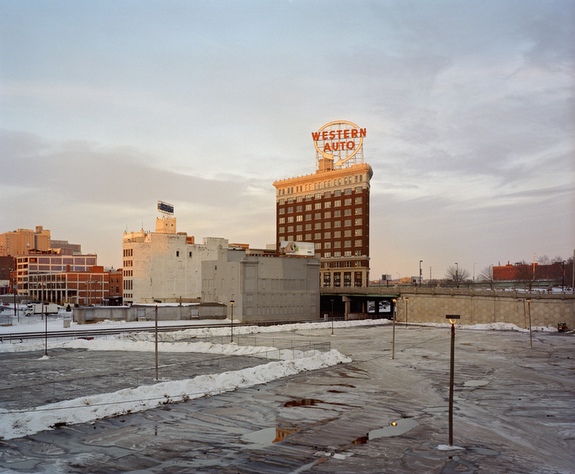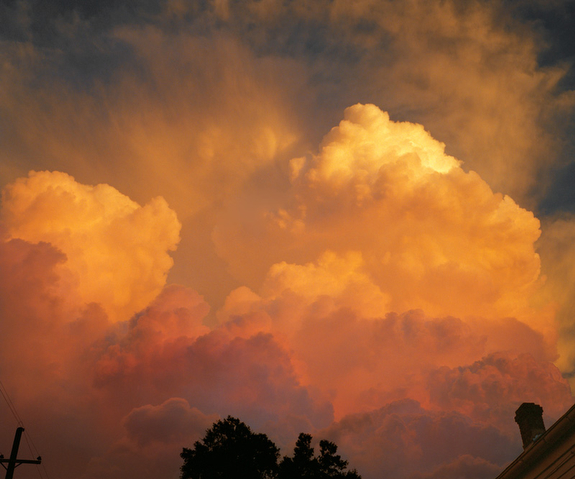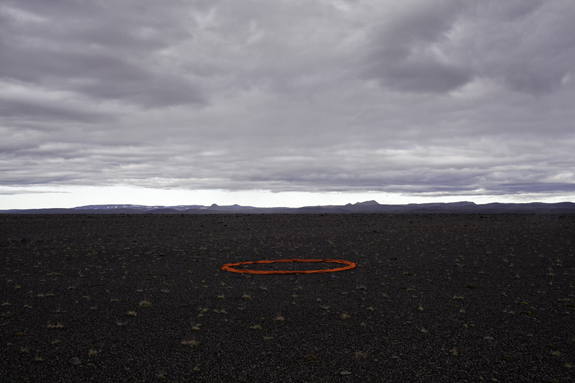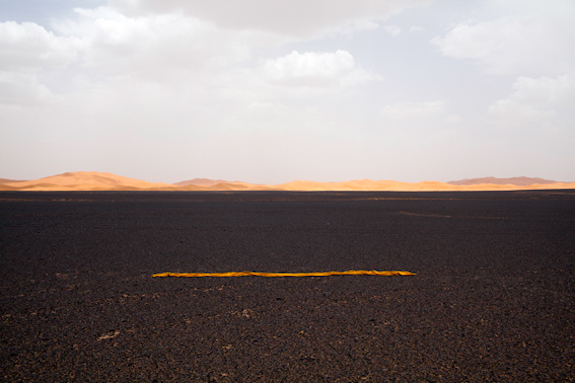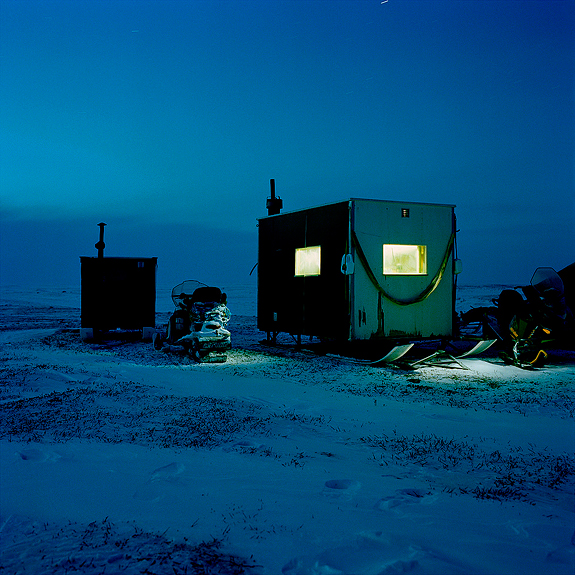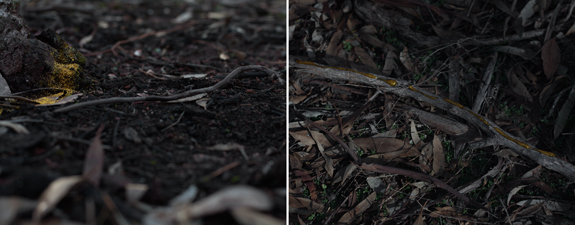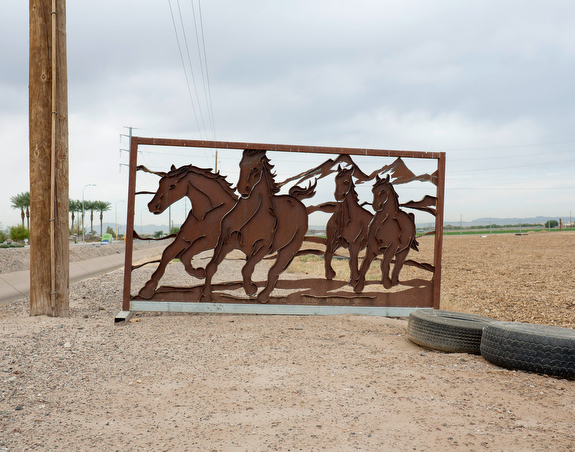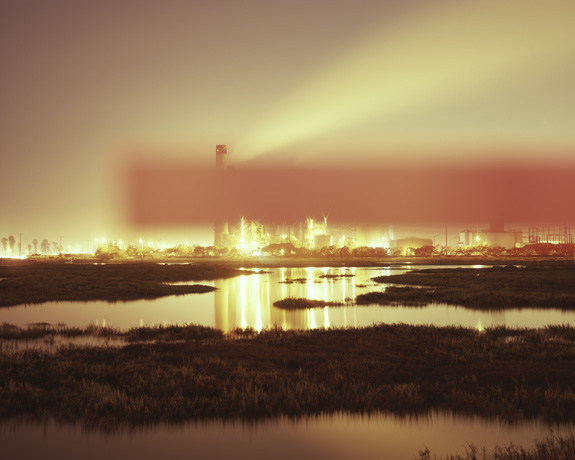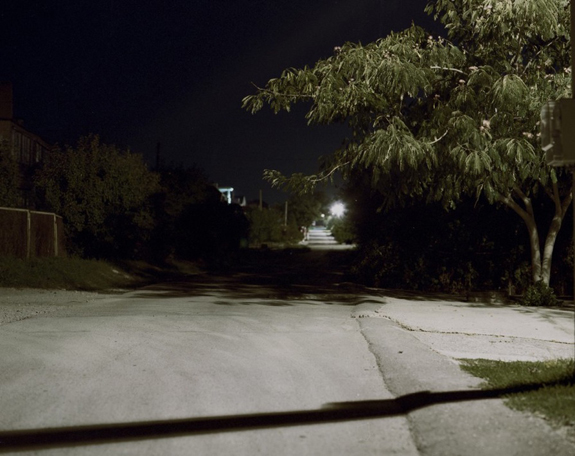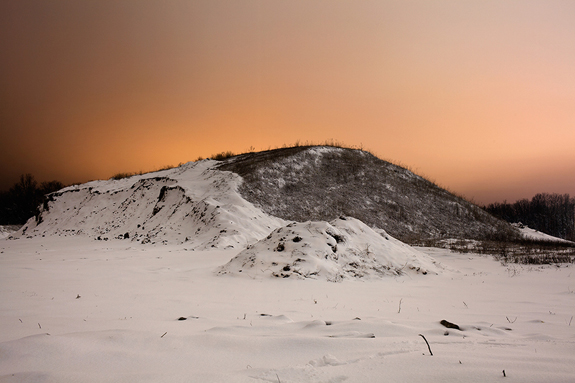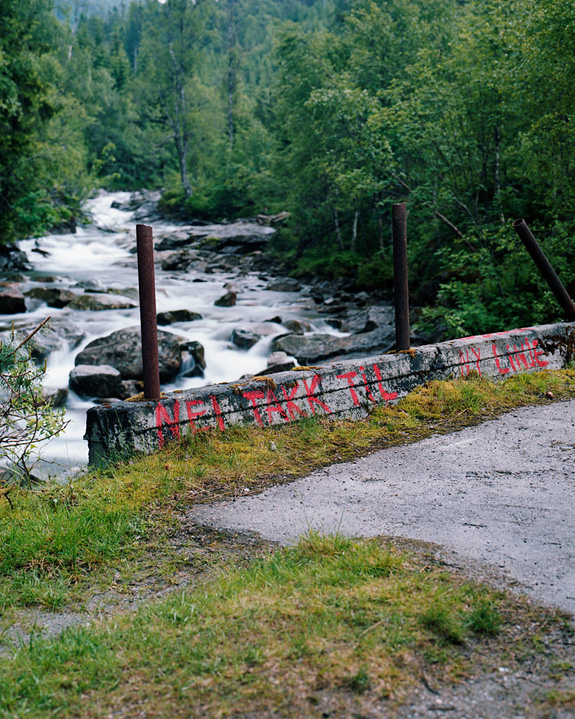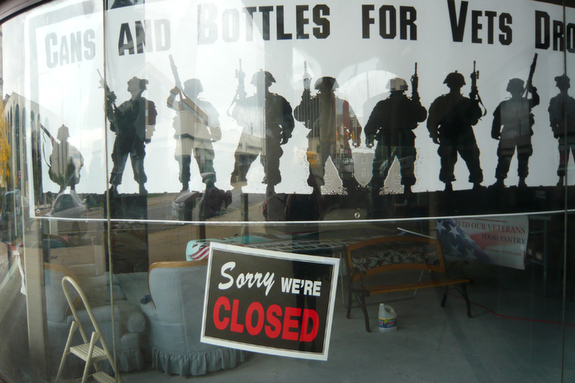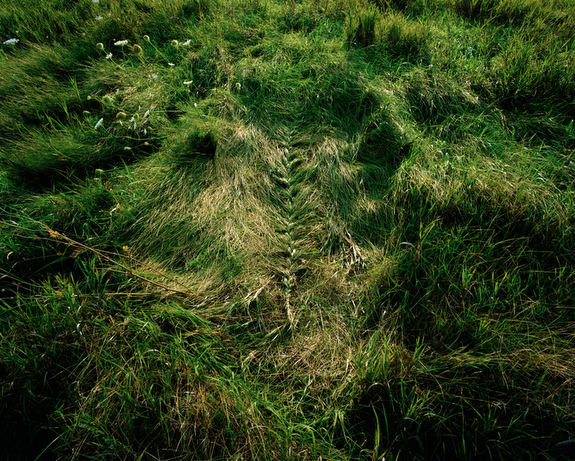
Looking at the Land, curated by Andy Adams
As Adams notes in his introduction, many of the photographers included in Looking at the Land grew up in the suburbs, and have little experience with the wild. They are the heirs to the New Topographics style of photography.
Many of the photographs in this broad survey share a similar aesthetic: straightforward images of a place, but often tinged with irony or humor. Adams has created an exceptional viewing experience: there’s a 17-minute video of the photos and also an online catalog of each of the 88 images along with interviews with most of the artists. It’s fascinating to navigate through the interviews, reading the ones attached to the images that catch your interest.
The exhibit accompanies a show at the Rhode Island School of Design that investigates landscape photography from 1865 to the present. While the RISD show will be up for only a limited time, Adams plans to keep his exhibit online indefinitely. Adams, who produces the website Flak Photo, has also narrowed his focus to images made in the 21st century.
Some of the more memorable images, for me, were Chuck Hemard’s photo of flocking birds on telephone wires, Eliot Dudik’s image of tire tracks in snow, Jennifer Ray’s placement of woven grasses in a field, Mike Sinclair’s Kansas City street scene and Sophie T. Lvoff’s cloud scene photographed in New Orleans.
I was surprised to see how many of the images were beautiful in a classical sense, rather than ironic. Lvoff’s cloud image, for example, shows a gorgeous orange and peach-colored sunset. Her interview confirms my impression: “The way the sky unfolds every day is unique and has to do with the humidity here — so I photographed the roof of my house and surrounding trees on my street during an epic weather moment. It’s beautiful.”
Rather than critique humanity’s interactions with nature, some of the photographers consider ways to improve it. Ray writes this about her grass sculpture: “I began to think of how I could make a model of this symbiotic relationship — how I could depict nature manipulated, but unharmed, by humans. I spent two days sitting in this pasture, braiding grass, and trying to find the right topography, form, and time of day. As a gesture, the braid is gentle and impermanent, undone with the next windstorm or downpour.”
The photographers Adams has brought together provide a more hopeful vision than was presented in 1975 at the New Topographics exhibit in Rochester, New York.
— Willson Cummer
